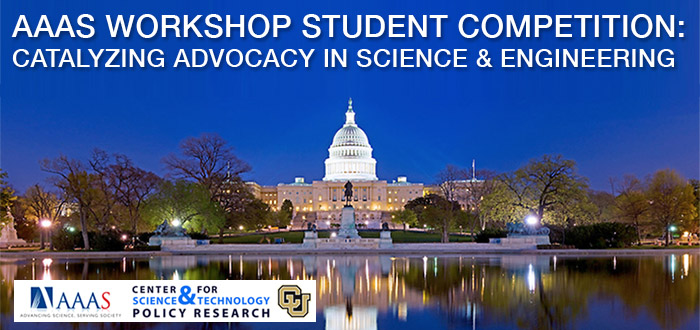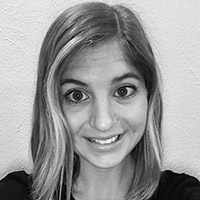
American Association for the Advancement of Science
"Catalyzing Advocacy in Science and Engineering" Workshop Student Competition
Reflections from the AAAS “CASE” Workshop
 Caroline Havrilla
Caroline Havrilla
Ecology and Evolutionary Biology University of Colorado Boulder
Participating in the 2017 AAAS Catalyzing Advocacy in Science and Engineering (CASE) Workshop in Washington, D.C. was a truly transformative experience for me as a scientist. The three-day workshop was a thought-provoking crash course in science policy, in the company of a diverse cohort of scientists from around the country, and exposed me to the complex world of policymaking. Each day of the workshop was jam-packed with a cohesive line-up of sessions with talks from speakers who shared with us their expertise on a wide range of topics in science policy. We learned about policymaking, the federal budget process, and importantly, how scientists can advocate for science and contribute to decision making within the science policy realm.
One consistent message throughout the workshop was the important distinction between “policy for science” and “science for policy.” Policy for science mostly refers to the federal budget process and the allocation of federal funds to scientific research and development. Science for policy, on the other hand, is the process whereby scientists communicate science to policymakers to inform policy-making. During the CASE workshop, my cohort first learned about policy for science, mainly focusing on the many challenges of the federal budget process, and how these challenges impact science. One particularly striking issue we were exposed to concerned the balance, or perhaps more fittingly, the imbalance, between mandatory and discretionary spending in the US federal budget. Mandatory spending, comprised of entitlement programs like Medicare, Medicaid, and Social Security, makes up about two thirds of the circa $4.1 trillion US federal budget. Discretionary spending on the other hand, makes up only a third of the federal budget. Because there is bipartisan opposition to cutting entitlement programs, when the budget needs to be trimmed, cuts are made to the non-defense discretionary budget, which is already a fairly small slice of the budgetary pie. Unfortunately, this is the category in funding for scientific organizations like NSF, NASA, and the EPA fall, making those programs vulnerable to budget cuts when their activities are not deemed “necessary” spending. For me, learning about this aspect of the federal budget process brought into perspective the overarching challenges of continued federal science funding, and made it clear that effective advocacy for science is critical.
After learning about the intricacies of policy for science, we turned our focus science for policy, and how to become more effective science communicators. According to many of the science policy officials we met with in Washington, scientists often miss out on valuable opportunities to effectively communicate their science for policy because their messages often misalign with the needs of policymakers. This misalignment often results from fundamental differences in what information science and policy spheres incorporate into their decision making processes. Policymakers often make decisions based on big-picture, culturally-based value systems, while, in contrast, scientists typically make decisions based on highly specific, data-based evidence. Scientists can more effectively communicate with policymakers by 1) recognizing this communication barrier exists, and 2) incorporating storytelling and discussions of the applications and benefits of their research to addressing broader societal issues. Science is only one small piece of the decision making process, but by aligning research to economic, environmental, and societal outcomes, we can better advocate for incorporation of science into policymaking. On Hill Visit Day, the last day of the CASE workshop, my cohort members and I had the incredible opportunity to visit the Hill and advocate for scientific research with Congressional members and their staffers. With the help of the AAAS staff and our Hill guide, Heather Bené (staff member at CU’s Office of Government Relations), we had the opportunity to practice communicating our science and advocating for the incorporation of basic and applied scientific research into policymaking.
I am tremendously thankful to the University of Colorado Center for Science and Technology Policy Research (CSTPR), the Center for STEM Learning, and Graduate School for sponsoring my participation in the CASE workshop and look forward to incorporating science policy in my future career.
